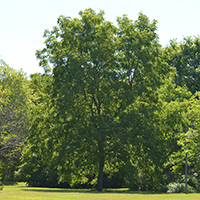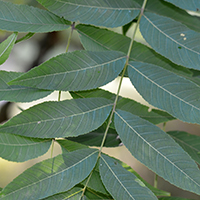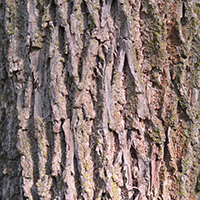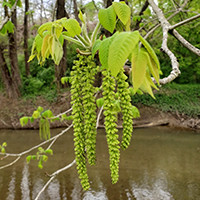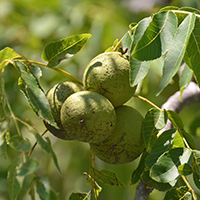What black walnut looks like
Size and shape
- Grows up to 30 metres tall.
- Coarse branches.
Leaves
- Leaves have 14 to 22 leaflets on short stalks.
- Leaflets at the end of stalks are smaller than the rest.
- Resemble butternut leaves.
Bark
- Dark, thickly ridged bark.
Flowers
- Long green catkins bloom in spring.
Fruit
- Round, non-sticky fruits.
- Nuts are round with smooth ridges.
Where black walnut is found
Black walnut is a common species in moist, low-lying areas in Southwestern Ontario. It has often been planted north and east of its range. It can live to be 150 years old.
What you need to know to grow black walnut
- Moisture: grows best in moist soils.
- Shade: intolerant of shade; grows best in full sun.
- Soil: grows best in well-drained, rich soils.
- Note:
- black walnut roots release juglone, a substance that inhibits growth of other plants
- when planting trees near black walnut, choose juglone tolerant species such as maples, oaks, hickories and hemlock
Benefits and uses of black walnut
Wildlife benefits
Many birds and small mammals, such as squirrels, eat black walnuts.
Commercial uses
Black walnut is renowned for its strong, dark heartwood and is often used for high quality furniture and veneer. Other uses include:
- cabinetry
- panelling
- specialty items and finishes
Fun facts about black walnut
- The range of black walnut is moving north thanks to the planting efforts of people and squirrels.
- Black walnuts are edible and have a distinct, sweet flavour.
- Black walnut fruit can be used to create a dark dye for fibres and fabrics.
Updated: January 10, 2024
Published: July 18, 2014
